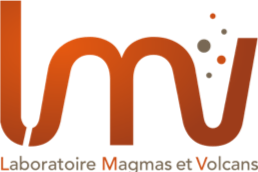The research conducted in this axis is organized around four directions:
The cycle of volatile element in the mantle :
The distribution of volatile elements in the mantle is known in a very fragmentary way. However, the incompatible behavior of these elements suggests that there are pronounced heterogeneities of concentration. The objective of this research is to better understand the cycling of volatile elements in the mantle in relation to geochemical models established from conventional systematics (e.g. radiogenic isotopes Sr, Nd and Pb). This research is based on the analysis of volatile elements (S, Cl, F) in silicate melt inclusions trapped in primitive olivine crystals.
The behavior of trace elements during degassing :
Trace elements exhibit variable volatility, to the first order this volatility is independent of their atomic mass, but dependent on their ability to form complexes with major gas constituents (S, Cl, F). If the relative volatility of the elements is more or less known, the absolute volatility of the elements (which conditions the elementary fluxes towards the environment) remains uncertain. This research involves the analysis of weakly degassed objects (tephras, Pele’s hair, inclusions of silicate melt trapped in crystals), and representative samples of the gas phase (aerosols, condensates, sublimates).
Degassing kinetics :
Analysis of 210Po-210Bi-210Pb radioactive disequilibrium in gases, commonly undertaken at LMV, provides insight into the dynamic parameters of degassing (e.g., magma residence time in the surface reservoir and gas extraction kinetics) via numerical modeling. Recent methodological and conceptual developments that take into account the influence of radon degassing on Po-Bi-Pb systematics also allow to go further by discriminating deep degassing signatures for long residence times and slow degassing kinetics. These developments suggest the possibility of using the short-lived radioactive disequilibrium in gases to trace exceptional eruptive events and to better understand their triggering mechanisms.
New tracers of degassing, the light elements Lithium and Boron :
The isotopic fractionations of Lithium and Boron occurring during volcanic degassing are still very poorly known. However, a theoretical knowledge base (e.g. fractionations by coordination effect in equilibrium processes or fractionations by differential diffusion of isotopes in disequilibrium processes) suggests important isotopic fractionations whose amplitude and direction inform us about the mode (closed system versus open system) and the kinetics of degassing. This research involves an experimental approach aimed at quantifying the partition coefficients of light elements between silicate melt and fluid as well as the diffusion coefficients, and a geochemical approach sensu stricto. The objective is to develop new tracers capable of reconstructing the history of degassing in detail, identifying in particular the rapid and/or transient processes.
Target fields :
La Réunion, Islande, Açores, Îles Australes, Canaries, Chili


